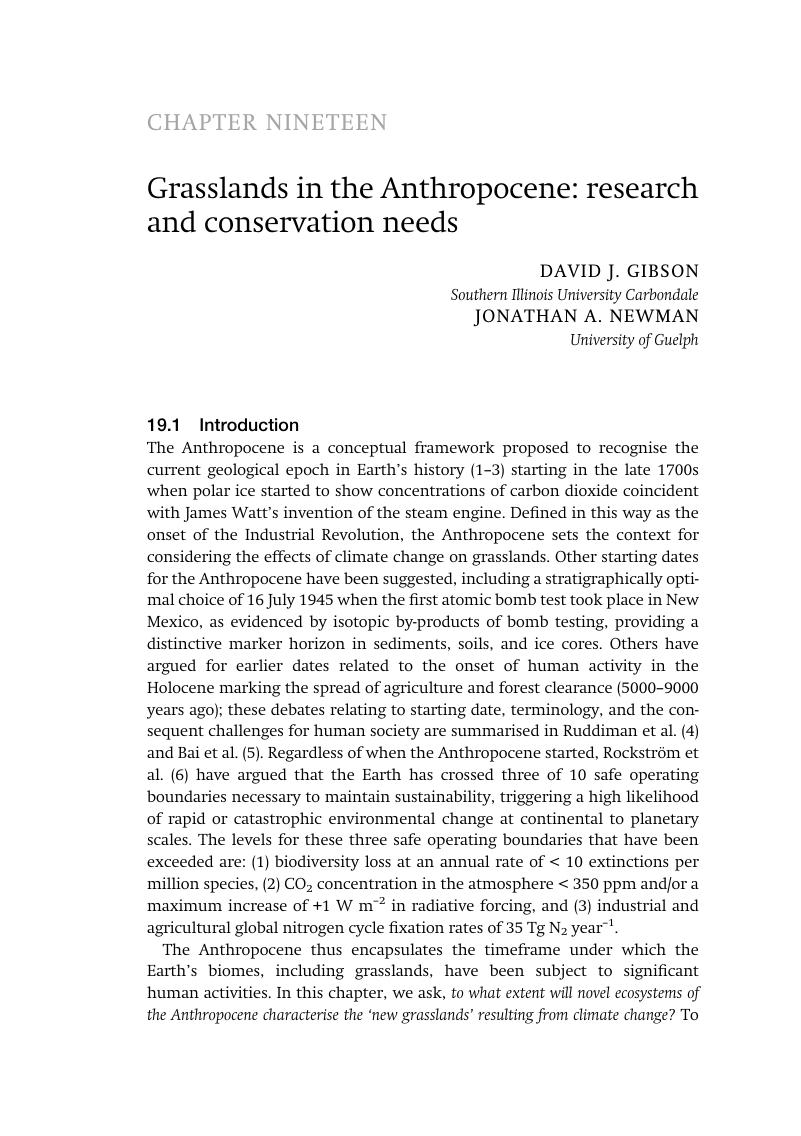Book contents
- Grasslands and Climate Change
- Ecological Reviews
- Grasslands and Climate Change
- Copyright page
- Contents
- Contributors
- Preface
- Introduction
- CHAPTER ONE Grasslands and climate change: an overview
- CHAPTER TWO Methodology I: Detecting and predicting grassland change
- CHAPTER THREE Methodology II: Remote sensing of change in grasslands
- Part I Grassland dynamics and climate change
- Part II Species traits, functional groups, and evolutionary change
- Part III Dealing with climate change effects
- CHAPTER FIFTEEN Altered grazing systems: pastoralism to conventional agriculture
- CHAPTER SIXTEEN Climate change and the politics and science of traditional grassland management
- CHAPTER SEVENTEEN Assessing rangeland health under climate variability and change
- CHAPTER EIGHTEEN Restoring grassland in the context of climate change
- CHAPTER NINETEEN Grasslands in the Anthropocene: research and conservation needs
- Index
- Plate Section (PDF Only)
- References
CHAPTER NINETEEN - Grasslands in the Anthropocene: research and conservation needs
from Part III - Dealing with climate change effects
Published online by Cambridge University Press: 22 March 2019
- Grasslands and Climate Change
- Ecological Reviews
- Grasslands and Climate Change
- Copyright page
- Contents
- Contributors
- Preface
- Introduction
- CHAPTER ONE Grasslands and climate change: an overview
- CHAPTER TWO Methodology I: Detecting and predicting grassland change
- CHAPTER THREE Methodology II: Remote sensing of change in grasslands
- Part I Grassland dynamics and climate change
- Part II Species traits, functional groups, and evolutionary change
- Part III Dealing with climate change effects
- CHAPTER FIFTEEN Altered grazing systems: pastoralism to conventional agriculture
- CHAPTER SIXTEEN Climate change and the politics and science of traditional grassland management
- CHAPTER SEVENTEEN Assessing rangeland health under climate variability and change
- CHAPTER EIGHTEEN Restoring grassland in the context of climate change
- CHAPTER NINETEEN Grasslands in the Anthropocene: research and conservation needs
- Index
- Plate Section (PDF Only)
- References
Summary

- Type
- Chapter
- Information
- Grasslands and Climate Change , pp. 323 - 339Publisher: Cambridge University PressPrint publication year: 2019
References
19.7 References
- 2
- Cited by



